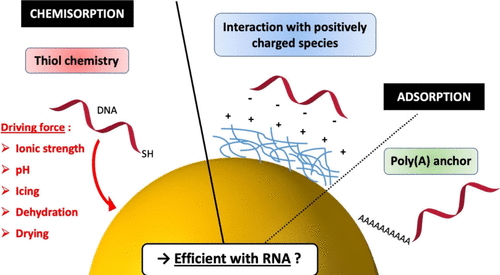- Polytech
- EMNS
-
Share this page
Raphaël's works on Gold Nanoparticles has been published in Bioconjugate Chemistry as ACS Editor's choice!
Published on May 23, 2025
– Updated on May 23, 2025
Gold Nanoparticles Coated with Nucleic Acids: An Overview of the Different Bioconjugation Pathways, by Raphaël Dutour and Gilles Bruylants - First published: 21 May 2025
https://doi.org/10.1021/acs.bioconjchem.5c00098
As part of the ACS Editors' Choice program, the article has been made freely available for a period of six months
Gold Nanoparticles Coated with Nucleic Acids: An Overview of the Different Bioconjugation Pathways

Gold-based nanomaterials have marked the last few decades with the emergence of new medical technologies presenting unique features. For instance, the conjugation of gold nanoparticles (AuNPs) and nucleic acids has allowed the creation of nanocarriers with immense promise for gene therapy applications. Although the use of lipid particles as RNA delivery vectors has been broadly explored, this review aims to focus on the limited models reported for the conjugation of RNA with AuNPs. This is nonetheless unexpected regarding the manifold strategies existing to conjugate DNA to gold nanoparticles, which are exhaustively listed in this paper. Furthermore, new processes such as fast microwave and freezing methods have been described very recently, and it therefore seemed necessary to review these recent but promising conjugation pathways and to pick out those applicable to RNA. Indeed, RNA is considerably more attractive than DNA for therapeutic purposes, but its low stability involves numerous difficulties in the construction of effective nanodevices. However, from the many approaches developed for DNA, it turns out that just two of them are frequently used for the building of RNA delivery platforms based on gold: the salt-aging method with thiolated RNA strands and physisorption. However, both approaches present strong limitations such as the low stability of the Au–S bond and the potential cytotoxicity of polycations. To conclude, this general assessment highlights that the exploration of innovating approaches implying different chemistries is needed for the creation of more robust and shapeable AuNPs-RNA conjugates.
